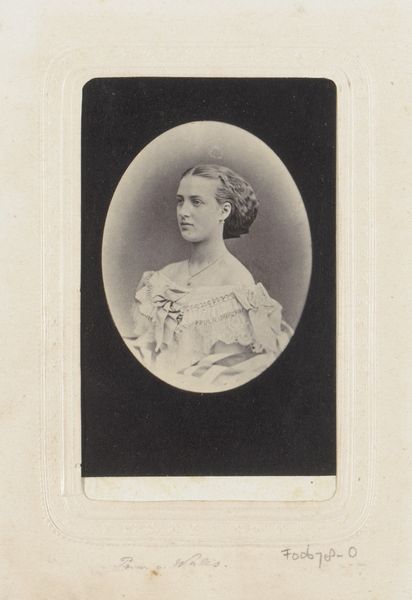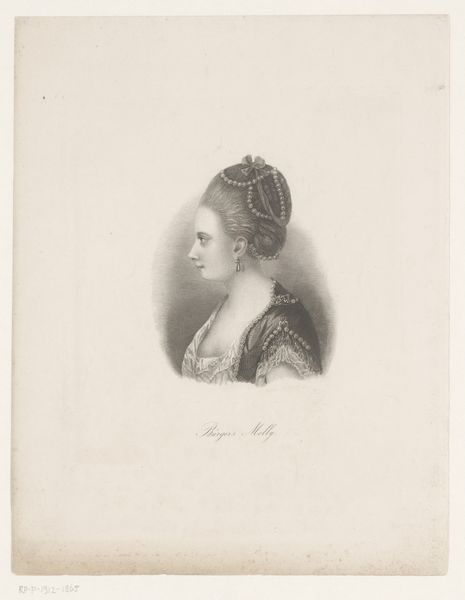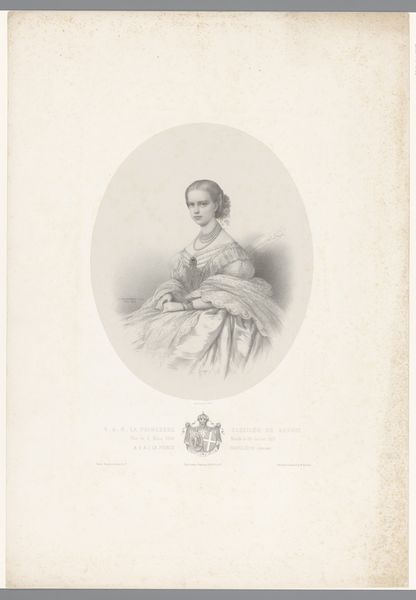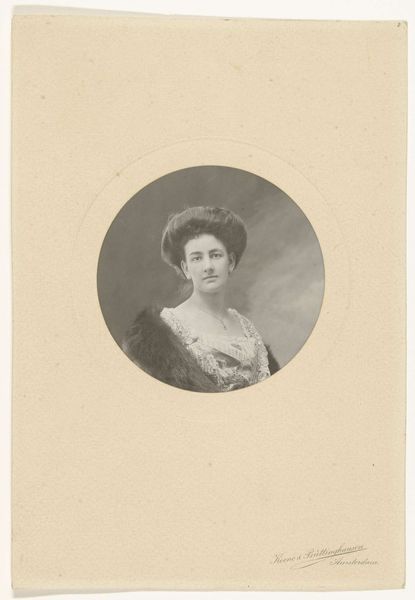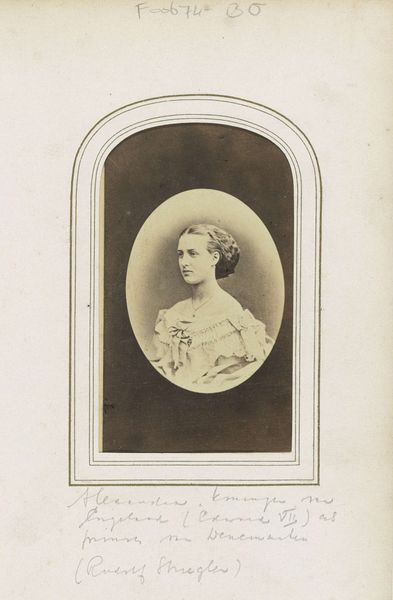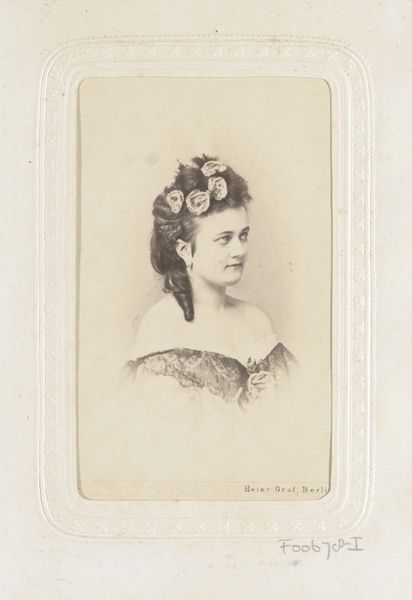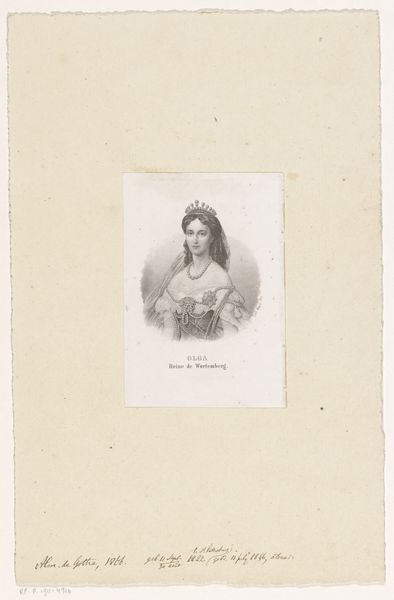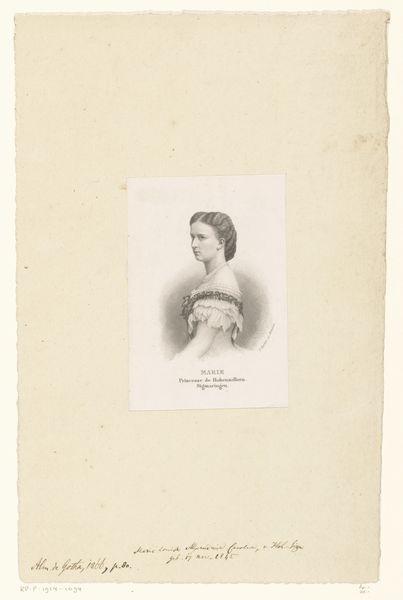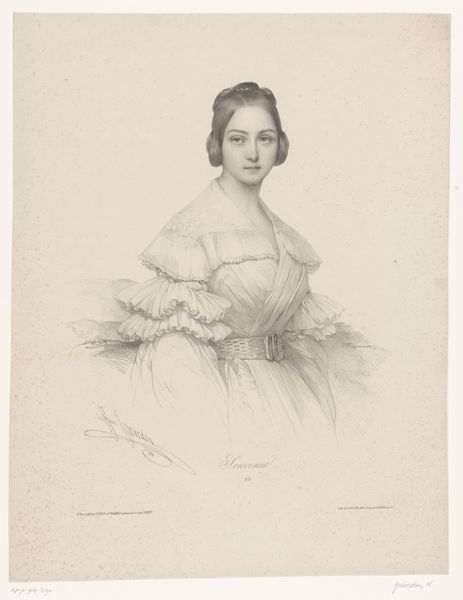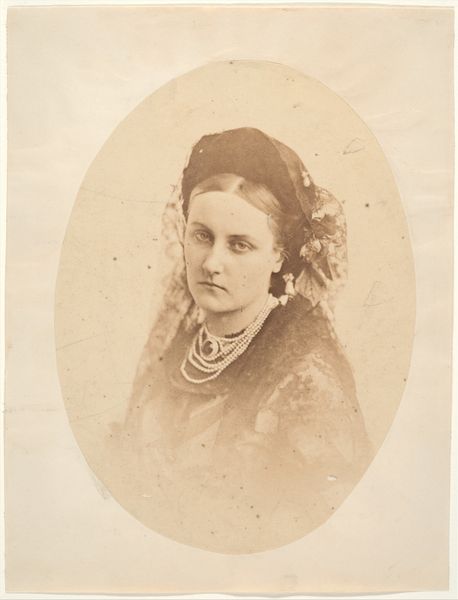
drawing, graphite
#
portrait
#
drawing
#
graphite
#
realism
Dimensions: height 560 mm, width 401 mm
Copyright: Rijks Museum: Open Domain
Editor: So, this is Émilien Desmaisons' "Portret van Alexandra van Denemarken als Prinses van Wales" from 1863. It's a graphite drawing, and what strikes me is the incredible detail – almost photographic! What do you make of it? Curator: I see a very deliberate display of power enacted through material means. This isn’t just a portrait; it's a carefully constructed representation of royal identity made accessible through mass reproduction techniques of the time. The graphite itself, its processing and application, speaks to industrial advances enabling such widespread distribution of royal imagery. Editor: So, the medium itself is important? Curator: Absolutely. Graphite production relied on specific labor practices and mining industries. This portrait, therefore, isn’t just about Alexandra, but also the network of labor that brought the graphite to the artist's hand, and facilitated its replication across society. How many prints do you think were made, and where might they have circulated? Editor: Hmm, I hadn’t considered that! Presumably a lot, if it's meant to disseminate royal power... maybe displayed in homes, shops, even factories? So, beyond just the aesthetic representation of Princess Alexandra, the piece becomes part of this wider, almost propagandistic project facilitated by new technologies? Curator: Precisely. Consider how the clothing itself is depicted, how those luxurious fabrics are translated through graphite. What kind of message would repeated exposure to such an image convey to a working-class viewer about power structures and labor divisions at the time? Editor: It certainly challenges a romantic reading of the image. I now see a very different story being told, one involving production and social standing, that's facilitated by advancements in material and processes! Curator: Yes, a shift of focus reveals the networks of creation beyond the figure. Looking at art through the lens of production really alters our interpretation.
Comments
No comments
Be the first to comment and join the conversation on the ultimate creative platform.
